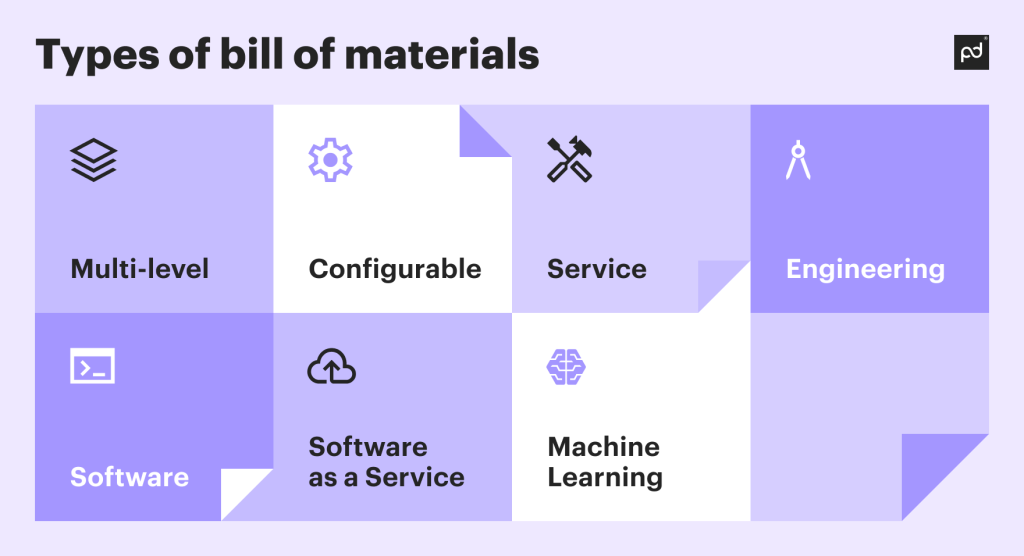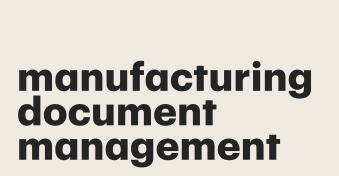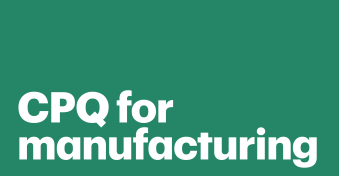In the manufacturing world, precision and planning are everything. A well-organized bill of materials (BOM) is essential to achieving both.
A BOM is the blueprint for production planning, detailing every part, raw material, and step in the manufacturing process.
From helping teams estimate costs to improving inventory management, a well-structured BOM streamlines production and reduces errors.
In this guide, we’ll explore what a BOM is, how to create one, the various types, and the advantages of using a BOM to optimize production workflows and keep teams aligned.
What is a bill of materials (BOM)?
A bill of materials (BOM) is a list that outlines all the required parts, raw materials, instructions, and pricing for creating or repairing a product or service.
A bill of materials is simple by design; after all, it’s a list, but it can have a significant impact on your business and the finished product, so it should be exhaustive and thorough.
“A bill of materials is essentially the recipe for creating a product,” Laurie Williams, Founder of Man and Van UK, says. “It lists every component, part, raw material required, acting as a detailed guide for manufacturing.”
This is the most standard BOM and is sometimes called a manufacturing bill of materials (MBOM).
Other types include engineering bill of materials, multi-level BOMs, and configurable BOMs, which we’ll cover in more detail below.
What is a bill of materials used for?
A bill of materials is essential to keep teams aligned on what they need to produce a product or service.
Teams use BOMs for many aspects of production, including:
- Estimating costs. Knowing the needed materials can help you establish and stick to a budget.
- Inventory planning. BOMs help to anticipate inventory needs to prevent shortages that can stall production.
- Planning. BOMs help to create timelines and processes to ensure teams stay on schedule and have the right parts to manufacture or repair products.
Industries that commonly use a bill of materials include:
- Automotive
- Food and beverage
- Pharmaceutical
- Electronics
- Manufacturing
What are the advantages of using BOM?
BOMs ensure teams have everything they need to produce or repair their products or services.
Here are some additional advantages of using a BOM.
Improved production planning
You may know which parts or components you need when you start production, but can you anticipate what you will need in the middle or toward the end of the project?
Having a BOM at the outset helps you with materials management so you can acquire the components you need when you need them and stick to your proposed schedule and budget.
“The real beauty of a BOM is how it brings structure and clarity to the production process,” Loris Petro, Marketing Strategy Lead and Digital Marketing Manager at Kratom Earth, says. “When everything is laid out in one place, there’s less confusion, and the workflow becomes more efficient.”
Enhanced inventory control
Acquiring raw materials is just part of the process. Inventory control is essential to ensure you have the right amounts to avoid shortages and reduce waste.
“A BOM helps track inventory levels precisely, minimizing the risk of stockouts and surplus,” says Valentin Radu, Founder of Omniconvert. ” This precision in tracking aids in maintaining a balanced supply chain, aligning with production needs and customer demand, all while optimizing costs and resources. By fostering better inventory control, a BOM enables us to meet production goals efficiently and elevate customer satisfaction through timely deliveries.”
Efficient resource allocation
A BOM also helps you plan how to use your resources, including your materials and team members, to streamline the production process.
“The advantages of using a BOM in a SaaS business include improved accuracy in resource allocation and enhanced production efficiency,” Valentin says. “It provides a comprehensive overview of required materials, thus assisting in avoiding over-purchasing, which reduces unnecessary expenses and clutter.”
Cost optimization
Outlining all the required materials and resources helps teams create budgets and accurately estimate production costs.
“It boosts efficiency by reducing waste and helping us plan better for upcoming jobs,” Laurie says. “Having a well-structured BOM can lead to cost savings, which is crucial in the competitive moving industry.”
What are the disadvantages of using a BOM?
Of course, a BOM may not be the right solution for every product and industry. Here are some of the drawbacks of using this method.
Data accuracy
A BOM is only as effective as the data it contains. Inaccurate data can cause production delays or resource shortages.
Automating data entry can help you avoid inaccuracies caused by manual inputs. With PandaDoc, you don’t have to create documents like your BOM, from scratch.
Use an existing template or upload one you want to work with.
You can also create approval workflows to assign approvers to ensure accuracy.
Team members can collaborate in the platform and leave in-line messages directly in the document to help avoid mistakes.
Frequent updates
Aspects of production, like design or material changes, can change after you complete your BOM.
An outdated BOM may lead to ordering or assembling incorrect parts, causing project delays, production errors, and increased costs.
“One disadvantage of using a BOM is that it can become outdated quickly, especially if there are frequent changes in product design or materials,” Rhett Crites, Founder of Theme Park Brochures, says. “If the BOM doesn’t reflect the most current specifications, it can lead to errors in production.”
Cross-department communication
Maintaining an accurate BOM requires constant communication and collaboration between teams.
“Keeping a BOM up-to-date requires constant communication between design, procurement, and production teams,” Rhett says. “This can be challenging if those departments aren’t fully aligned.”
Dynamic documents, like a BOM, must be able to adapt to quick updates and evolving situations.
With PandaDoc, you can set up project workflows and implement permissions, roles, and signing orders to ensure everyone who needs to approve, update, or review a document is accurately informed at the right time.
Types of bill of materials
There are several different types of BOMs that are used for various industries or types of projects.
Let’s explore the different types and when they are commonly used.

Multi-level bill of materials
A multi-level or indented BOM is used for products that require multiple steps, subassemblies, individual components, or groups of parts within a larger product.
Multi-level BOMs look like trees. The product is listed at the top, with subassemblies below. Each level of the BOM includes the required parts and assembly processes.
Take a bicycle, for example. Each component requires different parts. There’s the frame, the front and back wheels, the handlebars, the brakes, and more.
A multi-level bill of materials for a bicycle might look something like this:
Configurable bill of materials (cBOM)
Think of a configurable BOM or cBOM as a food menu with several options based on your needs.
With a configurable BOM, a company can use the same BOM to build different versions of a product vs. creating a new BOM for each variation.
Configurable BOMs are commonly used in industries with complex or highly configurable products like medical devices and cars.
Service BOM (SBOM)
Unlike a standard BOM, which includes all of the required parts, materials, and assembly instructions, a service BOM includes only the parts that can be serviced or repaired to maintain a product.
An SBOM is used primarily by service teams like field technicians and customer service.
Service BOMs are common in industries where products require ongoing maintenance, such as automotive, electronics, and manufacturing.
Engineering BOM
Unlike manufacturing BOMs, which outline how a product is built, an EBOM describes how a product is designed.
Engineers create an EBOM during the design phase and generally use computer-aided design (CAD) software.
An engineering BOM includes the required components, parts, specifications, and dimensions, and assembly instructions.
An engineering BOM for a car would include the necessary components broken into assembly categories, such as the engine, body, electrical system, etc.
Industries that use EBOMs include automotive, medical devices, and aerospace.
Software bill of materials
A software BOM includes software-specific components, such as libraries or reusable code packages that perform specific functions, version data, and licenses.
A software BOM helps developers track what’s inside the app, making it easier to update, manage, and secure an application over time.
Software as a Service BOM
A software-as-a-service BOM (SaaS BOM) is similar to a software BOM but specific to a cloud-based SaaS application, such as cloud infrastructure like servers and storage and networking components like firewalls.
Machine-Learning BOM (ML BOM)
A machine-learning BOM includes all the necessary components to create a machine-learning model.
An ML BOM contains things like the algorithms used to train the model, datasets or training data, frameworks used to design the model, and more.
How do you write a bill of materials?
Now that you understand how a BOM can help your business, let’s get into creating one.
Of course, the steps and structure will change slightly depending on the type of BOM you’re using.
What are the components of a BOM?
Regardless of the type of BOM or your particular product or service, here are the essential components of a BOM.
Determine the product or service
First, you must define what you’re creating. This will help you determine which type of BOM to use and which components to include.
List necessary supplies/materials needed
Based on step 1, make a comprehensive list of all the components you need to create your product.
This includes the raw materials and subassemblies, or groups of combined parts or components to form a distinct unit within a larger product.
Add part numbers
Determine the part numbers for each component in your BOM. Each part should have a unique number.
These numbers differentiate between parts, making them easier to track, manage, and reference during manufacturing, procurement, and maintenance processes.
Each part number typically includes information such as the type of part, version, or its specific design characteristics.
List item quantities
How many of each item will you need? At this stage, you may not know exact amounts for each component, so it’s smart to overestimate by a small amount (10 to 15%).
Keep track of your inventory during production and update your BOM accordingly.
Calculate unit costs
Now you need to determine the unit cost for each component. This includes the cost of the materials and the labor.
Your supplies can provide the cost for your raw materials, or you can find this information online.
For labor costs, estimate how long it will take to assemble each component multiplied by your manufacturing rate.
Keep your BOM in an easily-accessible place
Some teams keep their BOM in an Excel spreadsheet, Google Docs or use dedicated inventory managemetn software with bill of materials.
Document management software like PandaDoc is also a great option because it keeps your BOM secure in one place and makes it easy for team members to collaborate and update in real time.
Bill of materials example
To see how everything comes together, here’s a BOM example for a Bluetooth speaker.
| Part number | Component | Description | Quantity | Unit cost | Total cost |
|---|---|---|---|---|---|
| PN-2001 | Outer Casing | Plastic outer shell (ABS material) | 1 | $2.50 | $2.50 |
| PN-2002 | Speaker Driver | 3-inch speaker driver (10W) | 2 | $5.00 | $10.00 |
| PN-2003 | Bluetooth Module | Bluetooth 5.0 communication module | 1 | $3.00 | $3.00 |
| PN-2004 | Battery | 2000mAh rechargeable lithium-ion | 1 | $4.50 | $4.50 |
| PN-2005 | Power Button | On/Off push button | 1 | $0.50 | $0.50 |
| PN-2006 | Volume Control Dial | Rotary dial for volume adjustment | 1 | $0.75 | $0.75 |
| PN-2007 | USB Charging Port | Micro-USB charging port | 1 | $1.25 | $1.25 |
| PN-2008 | LED Indicator | LED light for power and charging status | 1 | $0.25 | $0.25 |
| PN-2009 | Circuit Board | Main PCB for power and signal control | 1 | $7.00 | $7.00 |
| PN-2010 | Rubber Feet | Anti-slip rubber pads for the bottom | 4 | $0.10 | $0.40 |
Bill of materials template
Using a BOM template helps to ensure you have all the necessary information. But remember, the structure of your BOM will vary depending on your industry, product, or service.
Here’s a general template you can use:

Create a well-defined bill of materials with PandaDoc
A bill of materials is essential for streamlining production and managing inventory.
Whether using a multi-level BOM for complex products or a basic BOM for simpler projects, having a well-organized structure ensures efficient resource allocation, cost control, and timely production.
For teams looking to create or manage BOMs more efficiently, software solutions like PandaDoc can simplify the process.
Templates, collaboration features, and automation help eliminate manual errors, enhance cross-departmental communication, and keep documents up-to-date as project needs evolve.
To try it out yourself, contact us to schedule a free, personalized demo.
Disclaimer
PandaDoc is not a law firm, or a substitute for an attorney or law firm. This page is not intended to and does not provide legal advice. Should you have legal questions on the validity of e-signatures or digital signatures and the enforceability thereof, please consult with an attorney or law firm. Use of PandaDoc services are governed by our Terms of Use and Privacy Policy.


